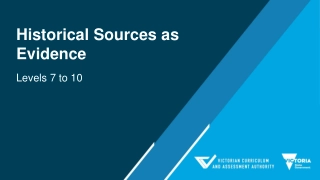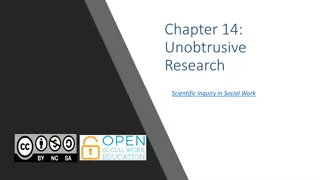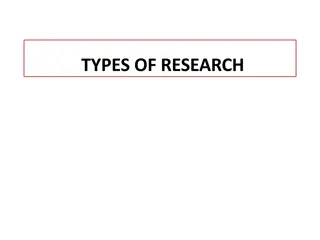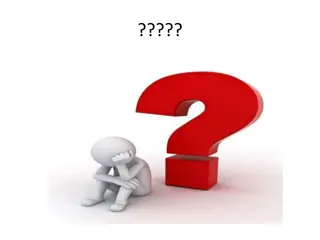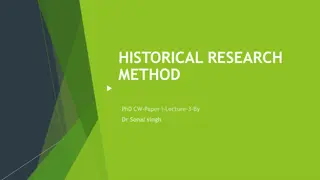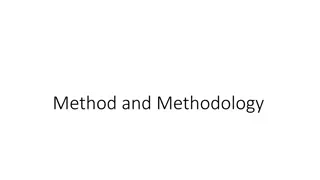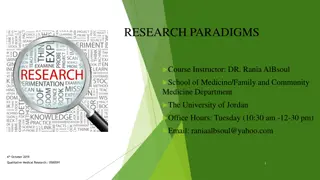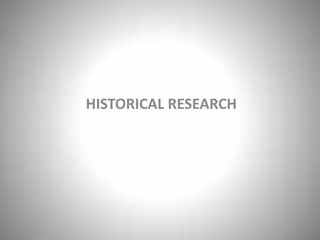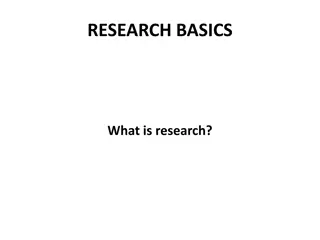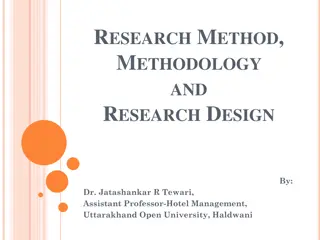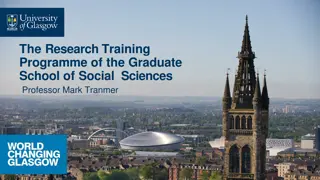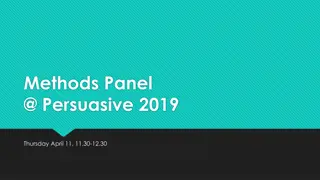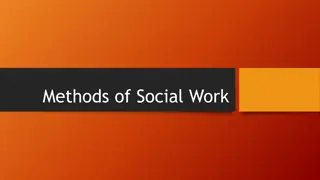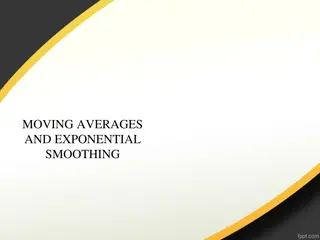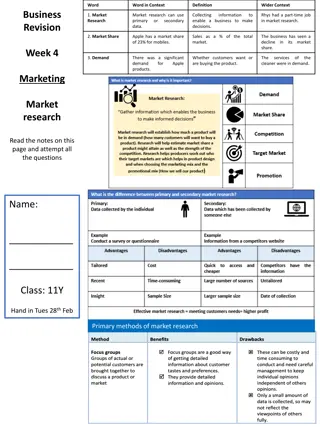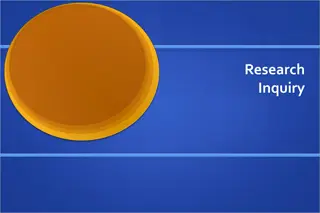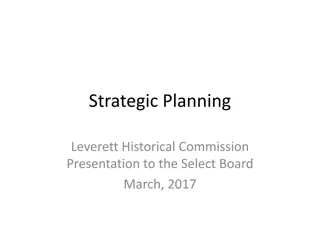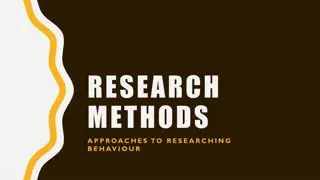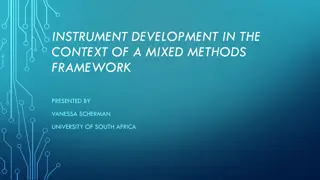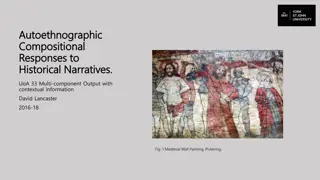Understanding Historical Research Methods
Historians delve into the past by examining evidence found in primary and secondary sources. They decipher point of view, evaluate sources for trustworthiness, and draw conclusions to write about historical events. This process involves analyzing evidence meticulously to accurately portray the past.
Download Presentation

Please find below an Image/Link to download the presentation.
The content on the website is provided AS IS for your information and personal use only. It may not be sold, licensed, or shared on other websites without obtaining consent from the author. Download presentation by click this link. If you encounter any issues during the download, it is possible that the publisher has removed the file from their server.
E N D
Presentation Transcript
Happy Monday! 1. Fill in your planner. 2. You will need a piece of blank notebook paper an something to write with.
Mrs. Dilmore Mrs. Dilmore 8/29/16 8/29/16 Extra Credit Extra Credit Supplies due Supplies due 9/2 9/2 B B- -F Period F Period 1. Have your Outline out for a stamp check. 1. Have your Outline out for a stamp check. Chapter 1 Chapter 1 Test Test 9/2 9/2 2. Fill in your planner for the week. 2. Fill in your planner for the week. 3. You need 1 piece of paper and something to write 3. You need 1 piece of paper and something to write with. with.
Lesson 1.2 How Does a Historian Work?
What is Evidence? A. Historians ask questions about the information they discover from the past. 1. In order to learn the answers to their questions, historians look for evidence: something that shows proof or an indication that something is true. 2. Historians use the evidence they read in historical sources to interpret what happened in the past.
Primary & Secondary Sources 1. Historians search for clues about the past using both primary and secondary sources. 2. Primary sources are firsthand evidence that were written/created by the people who saw or experienced the event. Letters, diaries, or government records are primary sources. 3. Primary sources help historians learn what people were thinking at the time of an event.
Primary & Secondary Sources 4. Secondary sources are things created after the event by people who were not part of the actual event. Biographies, encyclopedias and textbooks are all secondary sources. 5. Secondary sources give historians a broad view of an event.
What is Point of View? 1. After interpreting a source, historians consider whether or not the source is trustworthy and reliablebased on the author s point of view, or general attitude about people or life. 2. Authors of primary sources decide what information is important and what to include based on their points of view. 3. Historians must evaluate a primary source to identify and decide if the author s point of view is trustworthy. Sometimes sources have a bias, or an unreasoned, emotional judgment about people and events these sources cannot be trusted.
Writing About History When writing about events, historians interpret the information from primary sources to draw conclusions and make inferences. 1. Historians check the evidence in primary sources and compare it to sources that have already been determined to be trustworthy . 2. Then, they look at secondary sources that express different points of view to get a clear idea of what happened.
Looking at History 1. Historians gather information about a subject and then write what they have learned from their study. In most cases, historical books and articles are reviewed by other scholars to check for accuracy. ERIC HOBSBAWM (1917-2012) One of the leading British historians of the 20th century
Focusing on History 1. Some historians keep their areas of study very narrow, or finite, while others focus on broader subjects. D. Drawing Conclusions 1. A conclusion is a final decision that is reached by reasoning. Historians look for facts and evidence in their primary and secondary sources before making a judgment or conclusion. E. Historical Interpretations 1. Sometimes historians disagree about their interpretations of the facts, but it is the job of the historian to evaluate the primary sources and explain why his or her interpretation can be argued.


